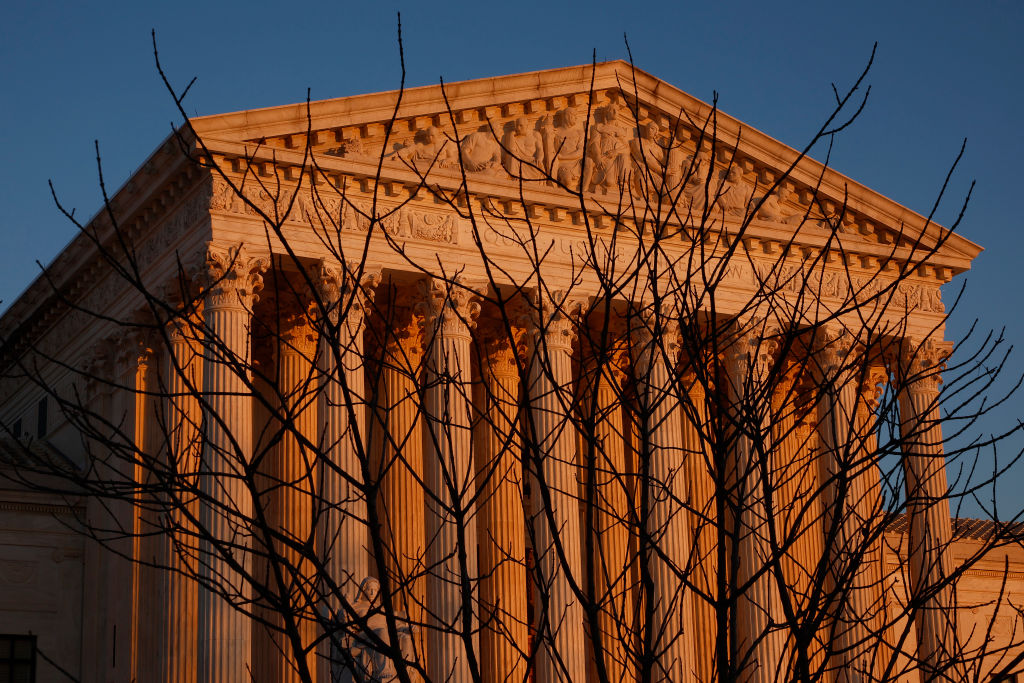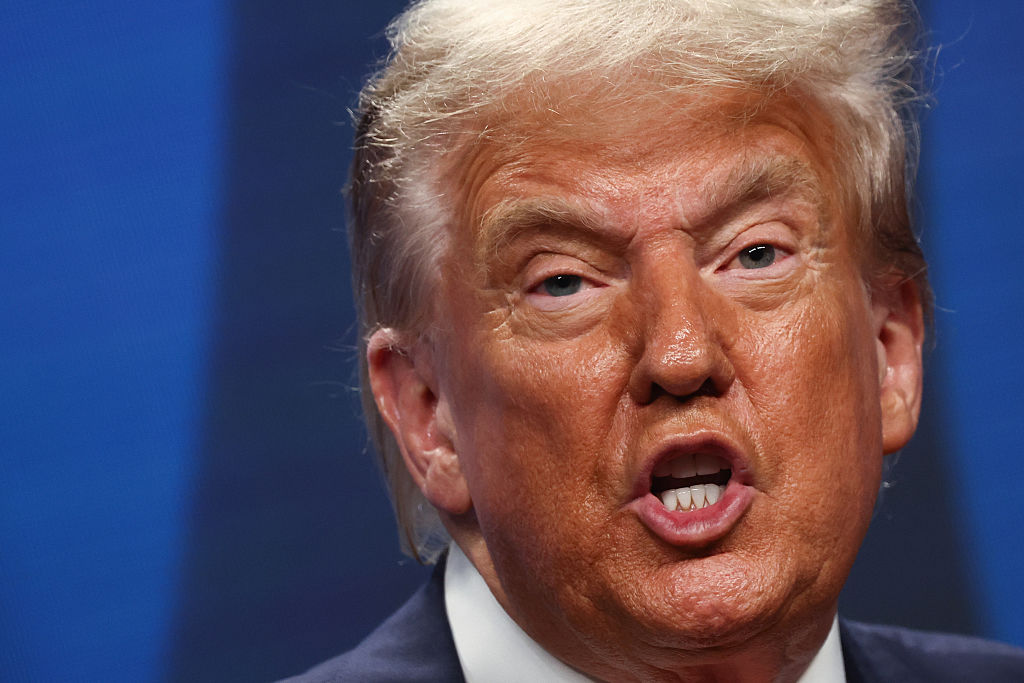Rutgers Law Professor Explains Stakes In Affirmative Action Cases
Rutgers Law Professor Stacy Hawkins Explains The Stakes In Latest SCOUTS Affirmative Action Cases

Source: Chip Somodevilla / Getty
On Monday, Oct. 31, the Supreme Court will hear oral arguments in the consolidated cases Students for Fair Admissions v. University of North Carolina and Students for Fair Admissions Inc. v. President & Fellows of Harvard College challenging the use of race as a factor in college admissions.
Rutgers Law Professor and Vice Dean Stacy Hawkins recently shared an overview of the evolution of affirmative action, the case before SCOTUS and the long-term implications for higher education and business. Professor Hawkins is also a senior faculty fellow at the Institute for the Study of Global Racial Justice.
The below Q&A with Professor Hawkins was provided courtesy of Rutgers Law School. It has been lightly edited for clarity.
When did affirmative action start, and how effective has it been?
Affirmative Action traditionally refers to programs initiated by President John F. Kennedy in 1961, peaking in the 1970s, that mandate “affirmative action” by employers and other private institutions receiving federal funds, such as colleges and universities, in favor of women and racial/ethnic minorities as a means of redressing past discrimination against these groups.
By contrast, many people also refer to current efforts, whether in the workplace or in educational settings, that use race, ethnicity or gender to achieve diversity as “affirmative action.” These programs are often justified more by concerns for the instrumental benefits that accrue from diversity, such as enriching the learning or work environment with people from a variety of backgrounds, rather than from the remedial concerns that motivated “affirmative action” in the 1960s and 1970s.
Traditional affirmative action efforts have not been as widely studied as you might imagine. But the research that is available tends to show that at their inception in the 1960s and through their peak in the 1970s, these efforts did benefit Black men and women and white women by opening up jobs in the skilled trades as well as in professional and managerial workforces that had been previously closed to these groups.
What are the issues in the case before the Supreme Court?
The Harvard and UNC cases pending before the Supreme Court seek to reverse four decades of precedent and prevent colleges and universities from ever considering race or ethnicity in admissions in any way and for any reason.
Although the case against Harvard is filed ostensibly on behalf of Asian American students, and there is much made in that case about the fact that Asian Americans suffer discrimination in admissions at elite schools like Harvard, at the end of the day, the case is simply an attack on the practice of considering race in college admissions.
Both the Harvard and UNC cases were filed by the same conservative activist (Edward Blum) who has been trying to get the Supreme Court to invalidate the use of race and ethnicity in college and university admissions since 2008 when he filed Fisher v. Texas, a case that also went all the way up to the Supreme Court. He lost that case in 2016 when the Supreme Court upheld the University of Texas’s use of race in admissions. Blum is banking on the fact that, with the appointment of three new conservative justices, he now has the votes to get the result he has always wanted but has never been able to achieve.
What is the implication for higher education?
It depends on whether the Court does what many expect it to do, which overrules longstanding precedent and says that colleges and universities may not consider race or ethnicity in admissions – even if it is necessary to achieve diversity.
It also depends on how broadly the decision sweeps in overruling that precedent. It’s possible that the Court will only say that you cannot use race and ethnicity in admissions no matter how necessary it may seem. That leaves open the possibility that colleges and universities can still articulate the benefits of diversity and seek to achieve to those benefits in ways that do not involve the explicit consideration of race or ethnicity.
If, however, the Court says that colleges and universities should not be pursuing student body diversity by any means, that changes the landscape much more dramatically. Valuing and promoting diversity has become such an integral part of how many colleges and universities pursue their educational missions that it would require a fundamental change in how those colleges and universities operate.
Are there implications beyond higher education, including for private employers?
Most legal commentators predict that the Supreme Court’s decisions in the higher education context will have clear application in the employment context. This is most especially true if the court takes a more restrictive view of the ability to consider race or ethnicity in trying to achieve diversity or even to pursue diversity at all.
Under existing employment law standards, there is probably already much less leeway for employers to consider race, ethnicity or even gender when making employment decisions, even in the interest of diversity. This possibility will become more restricted should the court overrule existing precedent and declare that diversity is not a legitimate end for institutions to pursue. It will be equally disruptive for employers, many of whom (just like colleges and universities) have embedded diversity into their institutional missions and operations.
How can the makeup of the court affect the outcome of the decision?
The current conservative supermajority (6:3) on the Court has demonstrated a willingness to unsettle even the most deeply settled legal precedents. Take the recent decision in Dobbs, which overruled Roe v. Wade. That precedent was more than four decades old, but the Court simply dismissed it as “wrong.” Looking at the current Court, three Justices (Roberts, Thomas, and Alito) have already expressed hostility to the use of race and ethnicity in college and university admissions. It would only take two more of the three newest conservative justices to join them in voting to overrule the existing precedent.
What will happen if affirmative action is dismantled? What would a rollback look like, and what will happen in colleges and workplaces?
If the Court simply says colleges and universities cannot use race and ethnicity in admissions, then they are likely to continue to engage in “race-neutral” efforts to achieve diversity. These efforts can include increasing consideration of socioeconomic status, which is correlated with race and ethnicity. Race-neutral efforts also can involve targeting certain high schools for recruitment, which can yield greater racial and ethnic diversity given how racially segregated most American high schools continue to be. This approach has been adopted by both California and Florida, which are both prohibited from considering race and ethnicity in college and university admissions under state law.
Because employers already have greater restrictions on how they can use race and ethnicity in making employment decisions, a narrow ruling by the Supreme Court restricting the pursuit of diversity to race-neutral means is not likely to have as large an impact on employers. However, if the Supreme Court goes further by saying that diversity is not even an interest institutions can pursue in a race-neutral way, then workplace diversity efforts will be upended as well, and the inability to pursue diversity at all will have dramatic and far-reaching effects.
SEE ALSO:
Over 80 Major Corporations File Briefs Defending Affirmative Action Ahead Of Upcoming SCOTUS Term
Fear Of Black Voting Power Is On The Supreme Court Docket In Merrill v. Milligan
















